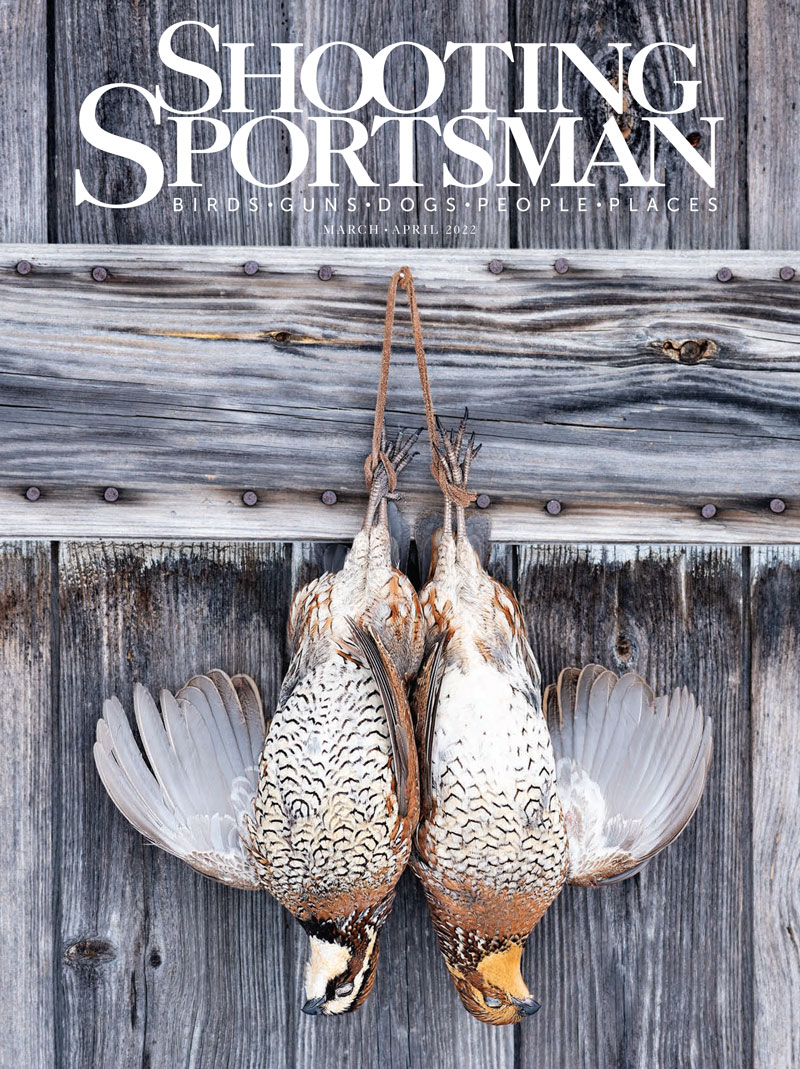Once you decide to reload, a golden opportunity arises. You now have complete control over what goes into your shotshells and their ultimate performance level.
Why is this important? Because it’s like fishing. The aspect of fishing that most affects how many and the size of the fish you may catch (assuming you’re in the right environment) is the terminal tackle at the end of the line. The rod you use to get your terminal tackle in front of fish is much less important.
It’s the same with shotgunning. What breaks the target and bags the bird is the number of pellets intercepting and striking the moving targets and the pellets’ ability to penetrate sufficiently. Assuming the right choke is being used for the distance, all of this is entirely an ammunition—not a gun—performance issue.
So to me it is senseless to hastily assemble reloads simply to try to save money. Loading one’s own ammunition is the art of handloading. Shotshell handloaders don’t need to be nearly as meticulous as benchrest rifle shooters, but if they adopt the same attitude toward quality, the resulting shotshells will improve markedly in lethality.
Shot Quality
The most important component—by far—in any shotshell load is the shot. Whether the load is capable of breaking a target or killing a bird is all up to the pellets. So the serious shotshell handloader becomes very selective about shot type, quality and size.
With shotshell pellets, the king variable is density. The higher the density of the pellet, the more momentum it will carry downrange to strike and penetrate the target—plus the smaller the pellet will need to be. Today the highest-density pellets available are nontoxic. HEVI-Shot is 12 density, and HW-13 is 13 density. A quantum leap higher is TSS, at 18 density, but there are quirks that still haven’t been worked out in loading TSS. Lead shot is about 11 density. If you choose to load bismuth shot, you’re looking at a density of only 9.7 or so. Steel comes in at about 8 density.
Second in importance is the hardness of the pellet. The harder the pellet is, the more resistant it is to deformation. And if it starts out roundish, its hardness keeps it roundish. So any pellet type that is soft has a major ballistic shortcoming. This is an inescapable fact for both lead and bismuth shot. All the rest of the current pellet choices for handloading are hard.
Third in importance is the roundness and uniformity of the pellet. All of the pellet types mentioned previously except lead, bismuth and HEVI-Shot are quite round, uniformly sized pellets. Any pellet that emerges from the barrel not round produces degraded patterns in almost direct proportion to its lack of sphericity.
Putting all this together, the hunter wanting long-range performance will gravitate to HW-13 and HEVI-Shot in that order. Because steel shot is round, hard and uniform, that also can be made to work simply by choosing a pellet two sizes larger than lead to get the same job done. Lead shot also serves for long-range shooting but, because of its inherent softness, it needs lots of pampering. Lead needs high-protection wad columns, high antimony levels (buy only magnum-grade shot), buffer and modest velocity levels to combat its proclivity for deformation before leaving the muzzle. In its highest form it is nickel plated provided it has a hard lead core. Only Precision Reloading sells hard, nickel-plated lead shot.
Bismuth shot, also inherently soft, has an additional minus. It is brittle and wants to bust into pieces before leaving the muzzle. Adding tin helps the brittleness, but nothing helps the softness. One also has to use a one-size-larger pellet to approximate lead performance. And therefore in its current state, plated or not, my testing has shown that bismuth remains largely a close-to-medium-range (≤ 40 yards) pellet unless it is buffered.
Reloading Recipes
Be advised that except in the reloading manuals I publish, all of the velocity and pressure figures listed for 95-plus percent of published reloading recipes are five-shot averages. In addition, the loads have not been selected for low variation in velocity and pressure. Low variation is one of the keys to hitting success, as you don’t want the velocity in particular bouncing back and forth 30 to 60 fps shot to shot. High-end factory target loads are carefully developed specifically for low velocity and pressure variations. The only way to know is to spend $20 per load and have your pet recipes pressure/velocity tested at a SAAMI-compliant ballistic lab like Precision Reloading’s. Sometimes powder companies will do it for you.
For best patterns, be sure to select recipes with wad columns that provide total shot-charge protection (high cushioning and total shot containment). Avoid like the plague any recipe detailed in Internet forums or chat rooms.
Velocity Levels
Do not be snowed by the current fad in factory loads with ultra-high-velocity levels. These blast the shot out of the muzzle and contribute to pattern degradation. They also contribute to gross levels of recoil. Neither of these things is going to do your ammunition performance and hitting success any good. Generally speaking, my testing indicates that all that is really needed with current shot types is something like 1,250- to 1,350-fps velocity levels. Some loads with hard shot can withstand 1,400 fps, but certainly not lead or bismuth shot.
Well, that’s it. Follow this regimen with the attitude of loading the best, and your success afield will improve markedly.
To consult with Tom Roster or to order his new Advanced Lead & Bismuth Shot Handloading Manual, his HEVI-Shot and HW-13 reloading manual, or his instructional shooting DVD, contact Tom Roster, 1190 Lynnewood Blvd., Klamath Falls, OR 97601; 541-884-2974, tomroster@charter.net.
Buy This Issue!
Read our Newsletter
Stay connected to the best of wingshooting & fine guns with additional free content, special offers and promotions.





